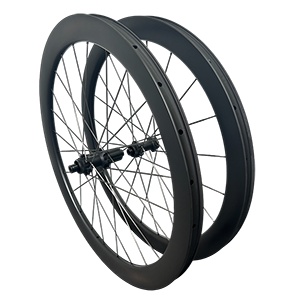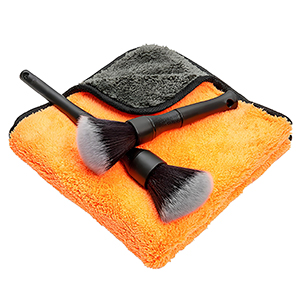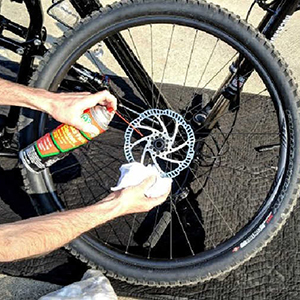
How to Clean Carbon Bike Wheels
Carbon fiber bike wheels have become the top choice for high-performance road and mountain bikes, thanks to their light weight, high rigidity, and exceptional performance. While these wheels are incredibly strong, they are also more vulnerable to damage from impacts and chemical wear. At high speeds or during tight cornering, carbon wheels provide stability and control, boosting your confidence on any ride. Proper cleaning and maintenance are essential for preserving the integrity of your carbon wheels. Regular care not only extends their lifespan but also ensures peak performance, keeping your bike safe and reliable for every adventure.
Why Cleaning Carbon Bike Wheels Matters
Carbon bike wheels are popular because they are light, stiff, and perform well at high speeds. But they are also more sensitive than alloy wheels. Dirt, dust, and road grime can build up and affect performance if not cleaned regularly.

Tools and Materials You Need to Clean Carbon Fiber Wheels
Cleaning carbon fiber wheels properly starts with having the right tools and materials. Using gentle, appropriate products ensures you protect the rim’s surface while removing dirt and grime effectively.
Mild Cleaners
Avoid harsh chemicals that can damage carbon fiber. A mild bike-specific cleaner or a gentle soap solution works best. These remove dirt without affecting the resin or finish on your wheels.
Soft Brushes and Cloths
Use soft brushes or microfiber cloths to clean your rims. Hard bristles can scratch the surface, so stick to gentle tools. Small brushes are helpful for hubs, carbon spokes, and brake tracks.

Step-by-Step Guide: How to Clean Carbon Bike Wheels
Cleaning your carbon bike wheels properly helps them look great and perform at their best. Follow these steps to do it safely and effectively.
Rinse Off Loose Dirt
Start by rinsing your wheels with gentle water to remove dust, mud, and loose debris. Avoid high-pressure sprays that could push dirt into sensitive areas or damage the rim surface.
Apply Cleaner
Use a mild bike-specific cleaner or soapy water. Apply it evenly to the rims, spokes, and hubs. Let it sit for a minute to loosen stubborn dirt, but don’t let it dry on the wheels.
Scrub Gently
Use a soft brush or microfiber cloth to clean all surfaces. Pay attention to brake tracks, spoke nipples, and hubs. Work carefully to avoid scratching the carbon fiber finish.
Rinse Thoroughly
Rinse the wheels with clean water to remove all soap and debris. Make sure no residue is left on the rims or hubs, as leftover cleaner can affect braking and wheel performance.
Dry and Inspect
Use a clean, soft cloth to dry your wheels completely. While drying, check for scratches, chips, or cracks. Early detection of damage helps keep your wheels safe and reliable for every ride.
How to Clean Disc Brakes and Hubs on Carbon Wheels
Clean the Disc Brakes
Start by wiping down the brake rotors with a clean, dry cloth. If they’re especially dirty, use a brake cleaner or rubbing alcohol on a rag to remove grease, oil, or brake dust. Avoid spraying cleaner directly onto the rotor, as it can damage the braking surface.
Inspect the Brake Pads
While cleaning the rotors, check the brake pads for wear. If they’re dirty or have built-up debris, gently clean them with a brush or cloth. If the pads are worn down, it’s time to replace them for better braking performance.
Clean the Hubs
For the hubs, use a soft brush to remove dirt and grime. Pay close attention to the areas around the bearings and the freehub body. If needed, wipe with a damp cloth, but avoid excessive moisture.

How to Deep Clean After Long or Rainy Rides
After a long ride or a wet, rainy day, your carbon bike wheels can accumulate extra dirt, grit, and moisture. A deep clean helps prevent damage and keeps your wheels in top condition.
Rinse Off Excess Dirt
Start by gently rinsing your wheels with water to remove mud and large debris. Use a hose with low pressure to avoid forcing dirt into sensitive areas like bearings or spokes.
Clean the Rims Thoroughly
Apply a mild cleaner to the rims, paying special attention to areas where dirt tends to collect, such as brake tracks. Use a soft brush to scrub away any stubborn grime, ensuring you don’t scratch the carbon surface.
Dry and Inspect the Wheel
Once cleaned, dry your wheels with a soft, clean towel. Inspect the rims closely for any water damage, cracks, or signs of wear. It’s important to catch any issues early to keep your bike performing safely.
Lubricate Moving Parts
After drying, apply lubricant to the hubs and freehub body to ensure they move smoothly. Be careful not to get lubricant on the braking surface.
By giving your wheels this extra care after harsh rides, you can keep them performing smoothly and extend their lifespan.
Cleaning Carbon Wheels vs Alloy Wheels
|
Aspect |
Carbon Wheels |
Alloy Wheels |
Notes / Tips |
|
Surface Sensitivity |
Carbon rims are more delicate and can be scratched by abrasive brushes or harsh chemicals. |
Alloy rims are more durable and can handle stronger cleaners and scrubbing. |
Always use soft brushes and mild cleaners for carbon wheels. |
|
Cleaning Frequency |
Needs regular gentle cleaning to maintain performance and prevent damage. |
Can tolerate less frequent cleaning without affecting performance. |
Frequent cleaning helps spot cracks or chips on carbon rims early. |
|
Brake Track Care |
Carbon brake tracks are sensitive to heat and contaminants; use carbon-specific cleaning methods. |
Alloy brake tracks are more tolerant of cleaning agents. |
Proper care ensures consistent braking performance on carbon wheels. |
|
Weight and Handling |
Carbon wheels are lighter, so extra care is needed when handling them during cleaning. |
Alloy wheels are heavier and less prone to accidental damage. |
Treat carbon rims gently to avoid bending or denting. |
Common Mistakes to Avoid When Cleaning Carbon Wheels
Cleaning carbon wheels seems simple, but a few common mistakes can cause damage or reduce performance.
Using Harsh Chemicals
Strong cleaners or solvents can harm the carbon fiber resin. Stick to mild bike-specific cleaners or gentle soap solutions to protect your rims.
Scrubbing Too Hard
Hard brushes or rough cloths can scratch or wear down the wheel surface. Always use soft brushes or microfiber cloths when cleaning.
High-Pressure Water
Using strong water jets can force dirt into hubs or brake tracks, causing damage. Use a gentle flow of water or a spray bottle instead.
Skipping Inspections
Not checking your wheels while cleaning can let small cracks or chips go unnoticed. Take a moment to inspect rims, hubs, and brake tracks during each cleaning session.
Neglecting Brake Pads and Hubs
Dirt build-up on these parts can reduce braking performance and affect wheel longevity. Clean them carefully along with the rims to keep everything working smoothly.
Troubleshooting: What If You Damage the Rim While Cleaning?
If you accidentally scratch or chip your carbon wheel while cleaning, don’t panic. First, inspect the rim closely to assess the damage. Small surface scratches usually don’t affect performance, but deeper cracks or chips need attention. Avoid riding on a damaged rim, as it can compromise safety. Contact a professional bike shop or carbon wheel specialist for advice on repairs or replacement. Taking quick action ensures your wheels remain safe and reliable for future rides.
Protective Finishing and Maintenance Tips
Proper finishing and regular maintenance help your carbon bike wheels stay safe, perform well, and last longer.
Apply a Protective Layer
After cleaning, consider using a carbon-safe polish or protective spray. This adds a thin layer that repels dirt and water, making future cleaning easier and protecting the rim surface.
Check and Tighten Bolts
Regularly inspect hub and spoke bolts to ensure they are tight. Loose components can affect wheel performance and safety.
Lubricate Moving Parts
Apply a small amount of lubricant to the hub bearings and freehub body. Avoid getting lubricant on brake tracks, as it can reduce braking efficiency.
Store Wheels Properly
When not in use, store your bike in a dry place away from direct sunlight. Excessive heat or moisture can degrade the carbon fiber over time.
Regular Inspections
Even with protective finishes, regularly check your rims for scratches, chips, or cracks. Early detection prevents minor issues from turning into costly repairs.
Following these maintenance tips keeps your carbon wheels looking great, performing efficiently, and safe for every ride.
Conclusion
Cleaning and maintaining your carbon bike wheels carefully helps them stay in top condition and perform reliably on every ride. From preparing before cleaning to following gentle cleaning steps, checking for scratches or cracks, and applying protective finishes, every step matters. Regular inspections and timely minor repairs can prevent small issues from becoming bigger problems, extending the lifespan of your wheels.
For durable, easy-to-maintain carbon wheelsets engineered for long-term use, explore Top-Fire’s carbon road bike wheels and experience wheels that combine performance, reliability, and style.